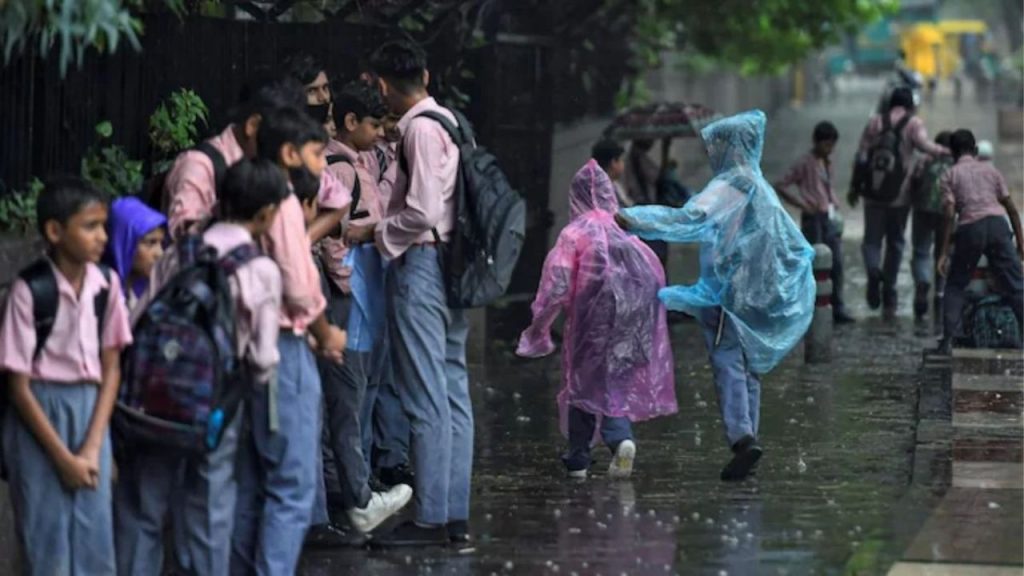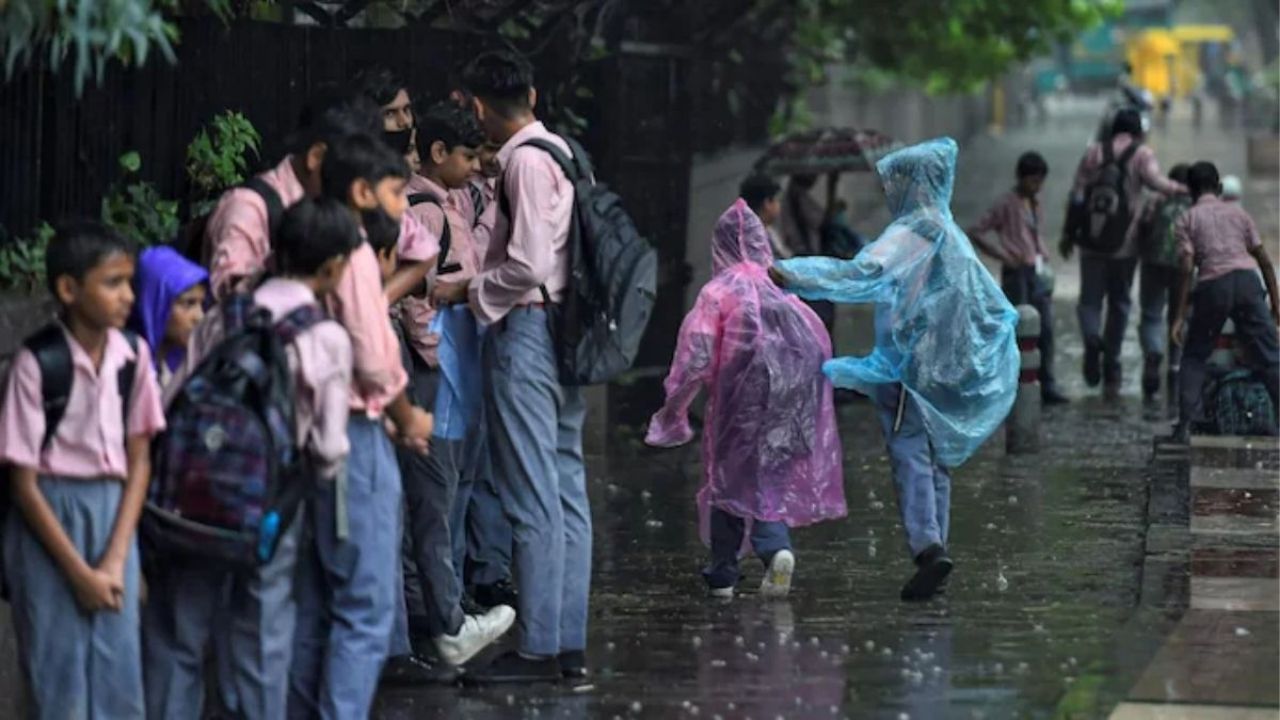In a sudden turn of events, schools in Mayurbhanj, Odisha, have been ordered to close today, July 25, 2025, following a severe weather warning issued by the India Meteorological Department (IMD). The closure is due to an approaching weather system that is expected to bring heavy rainfall, thunderstorms, and potential flooding to the region. This move is a precautionary measure aimed at ensuring the safety of students, teachers, and school staff. Let’s break down what’s going on, why it’s happening, and what people can do to stay safe during this extreme weather event.
Mayurbhanj, a district located in the northern part of Odisha, has been facing weather disruptions recently due to the formation of a depression in the Bay of Bengal. This depression has intensified, and the IMD has issued a red alert for the area, forecasting very heavy rainfall in the coming hours. In response, the local government has decided to keep schools closed today, allowing students and school staff to avoid the dangerous conditions expected throughout the day.

Heavy rainfall can lead to flooding, landslides, and other serious hazards. This, combined with gusty winds and lightning, makes it essential to take immediate action to protect lives and property. The district administration has not only ordered school closures but has also recommended that students in hostels be relocated to safer buildings if necessary.
Mayurbhanj Schools Stay Closed Today
| Topic | Details |
|---|---|
| Date of Closure | July 25, 2025 |
| Reason for Closure | Heavy rainfall and severe weather warnings from the IMD, including thunderstorms and flooding risks. |
| IMD Weather Alert | Red alert for very heavy rainfall, thunderstorms, and gusty winds. |
| Impact Areas | Mayurbhanj and surrounding districts like Keonjhar. |
| Government Actions | Schools closed, NDRF and ODRAF teams deployed, students advised to stay safe. |
| Safety Measures | Stay indoors, avoid low-lying areas, heed official advisories, and ensure relocation of vulnerable students. |
| Official Source | India Meteorological Department |
The sudden school closures in Mayurbhanj, Odisha, serve as a stark reminder of the power of nature and the importance of preparedness. With severe weather events becoming more frequent and unpredictable, it’s essential for communities to stay informed, follow safety measures, and be ready to adapt to changing conditions. Schools, parents, and students must work together to ensure safety during extreme weather events like this, taking the necessary precautions to protect lives and property. By staying informed and proactive, we can minimize the risks and keep our communities safe in the face of natural disasters.
What’s Causing the School Closures in Mayurbhanj?
To fully understand why schools in Mayurbhanj have been closed, let’s dive into the weather conditions that are driving this decision. The Indian Meteorological Department (IMD) issued a red alert due to a depression forming in the Bay of Bengal. This depression, a type of low-pressure system, can bring extremely heavy rains, strong winds, and dangerous weather patterns. These weather events are expected to last for the next 12 hours, which is why the government has decided to take preventive action.
Mayurbhanj and surrounding areas are particularly vulnerable to flooding during heavy rains due to the region’s geography. With numerous rivers, streams, and low-lying areas, flooding can occur rapidly, leading to dangerous conditions for people living in these zones. Furthermore, the region’s infrastructure, including schools, may not always be equipped to handle such extreme weather events, which makes closing schools a necessary safety measure.
In addition to the immediate closure of schools, authorities have taken steps to ensure the safety of those living in hostels or other vulnerable areas. Students in temporary or poorly built structures have been moved to safer, more stable buildings to avoid any risk of structural damage.

Practical Advice for Students and Parents
When dealing with severe weather events like this, it’s important to follow local advisories and take action to stay safe. Here’s a guide with practical tips on how to stay protected during heavy rainfall and storms:
1. Stay Indoors and Avoid Flood-Prone Areas
If you live in Mayurbhanj or surrounding areas, it’s essential to stay indoors during the storm. Flooding is one of the most dangerous effects of heavy rainfall, and it can happen quickly. If you live near a river, stream, or low-lying area, stay alert to weather warnings and be prepared to move to higher ground if needed.
2. Secure Your Home
Ensure that your home is secure. Close all windows and doors to prevent rainwater from entering. If you live in an area prone to power outages, it’s a good idea to have flashlights and batteries on hand. If you can, move valuables to higher ground to avoid water damage.
3. Monitor Local Updates
Keep an eye on local news channels and official government updates regarding the weather situation. Local authorities will provide timely information about road closures, evacuation plans, and other safety measures. This is especially important if you’re in an area that might be impacted by flooding or landslides.
4. Follow Evacuation Orders
If the government issues any evacuation orders or safety recommendations, follow them promptly. The National Disaster Response Force (NDRF) and the Odisha Disaster Rapid Action Force (ODRAF) are on standby to assist with any emergency evacuation efforts. Trust that these teams are well-trained to help during such situations.
5. Stay Away from Electrical Sources
Thunderstorms can cause power surges or even electrical outages, so avoid touching electrical appliances or water during a storm. If possible, switch off all electronics to prevent damage from potential power spikes.
6. Be Ready for Floods
If you live in an area that is prone to flooding, make sure you have an emergency kit prepared. This should include essentials like food, water, medications, first aid supplies, and important documents in waterproof bags.
What Can Schools Do to Prepare?
For schools, the safety of students, staff, and faculty should always be the top priority during such extreme weather events. Here are a few steps that schools in Mayurbhanj can take to ensure safety:
1. Stay Informed with Weather Alerts
Schools should ensure that they are receiving up-to-date information from the IMD and local authorities. This allows school administrators to make timely decisions, such as closing schools or relocating students if necessary.
2. Implement Emergency Plans
Schools must have detailed emergency plans in place for scenarios like flooding or severe weather. This includes evacuation procedures, designated safe areas, and clear communication channels for staff, students, and parents.
3. Regularly Check Infrastructure
Before the rainy season, schools should inspect their buildings for weaknesses, such as leaks, cracks, or areas susceptible to flooding. This proactive approach can prevent major damage during a storm.
4. Educate Students on Safety Protocols
Students should be educated on what to do in case of severe weather. This includes staying indoors, avoiding floodwater, and following safety guidelines.
5. Prepare for Remote Learning
If schools have to remain closed for an extended period, having a plan for remote learning can ensure that students don’t fall behind. Virtual classrooms and digital resources can be an effective way to keep students engaged and learning, even from home.
Bridge Washed Away in Odisha’s Sunabeda Sanctuary Amid Torrential Rains; IMD Warns of More Downpours
Odisha to Experience Widespread Rain and Thunderstorms: IMD’s Forecast for July 23–26
Odisha Braces for Intense Rainfall: IMD Forecasts Low-Pressure System Impact
FAQs
Q1: Why are schools in Mayurbhanj closed today?
A1: Schools in Mayurbhanj are closed today due to a red alert for extremely heavy rainfall and thunderstorms issued by the India Meteorological Department (IMD). These weather conditions pose significant risks, including flooding, landslides, and power outages.
Q2: How long will the heavy rainfall last?
A2: The heavy rainfall is expected to last for the next 12 hours, with the most severe conditions expected during this period. It’s crucial to stay updated on weather advisories.
Q3: What should parents do to keep their children safe during this storm?
A3: Parents should keep their children indoors, away from windows, and ensure they are not in flood-prone areas. Monitoring local news for weather updates and following official advisories is essential.
Q4: How can schools prepare for future weather disruptions?
A4: Schools should develop and regularly update emergency plans, ensure buildings are structurally sound, and educate students on safety procedures. They should also be ready to implement remote learning if needed.
Q5: Can I return to school after the storm passes?
A5: You should wait for official confirmation from local authorities before returning to school. Safety comes first, and the school will provide clear guidance once the weather clears up.





